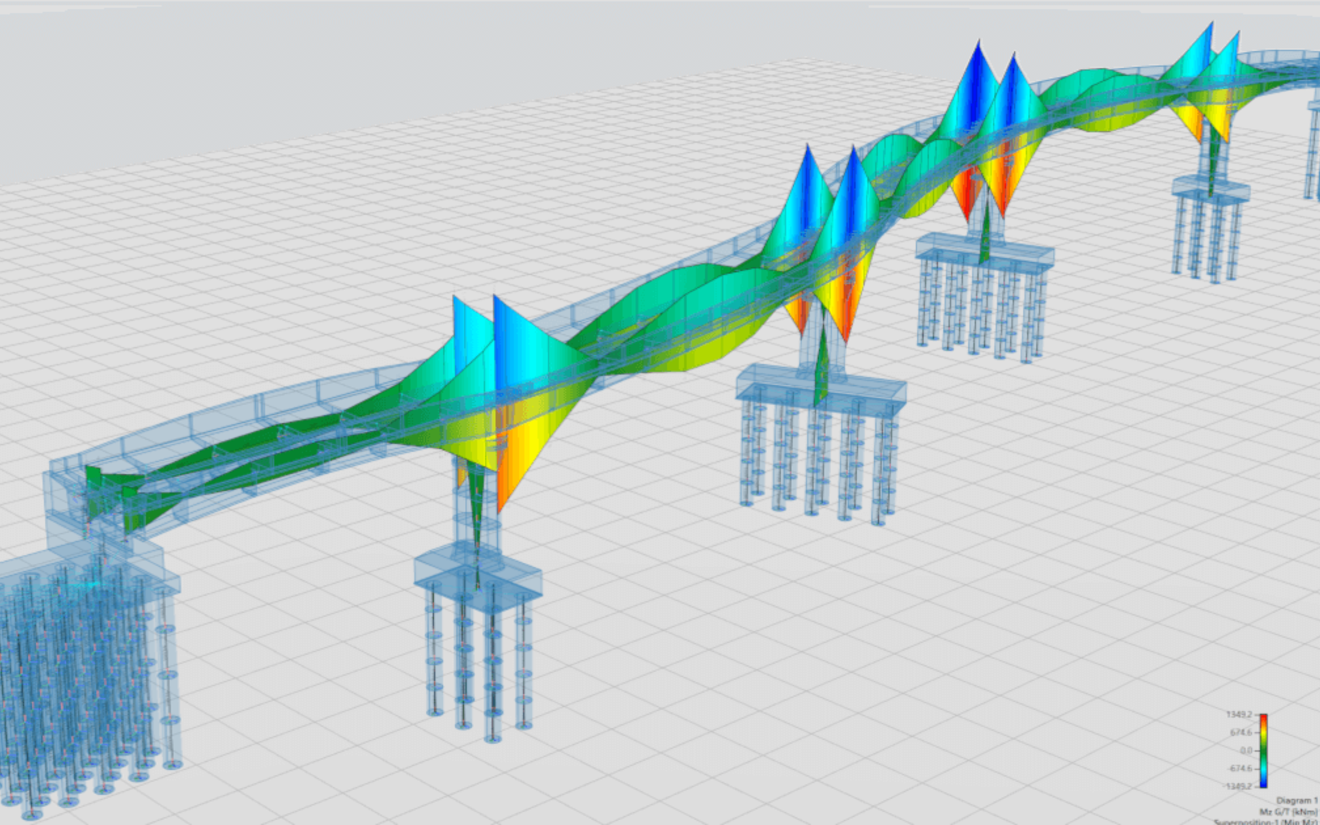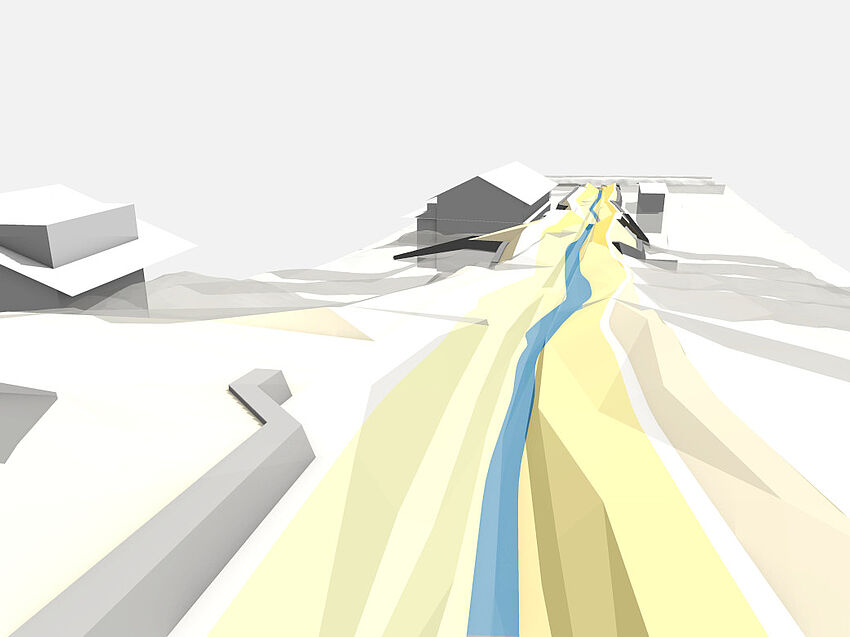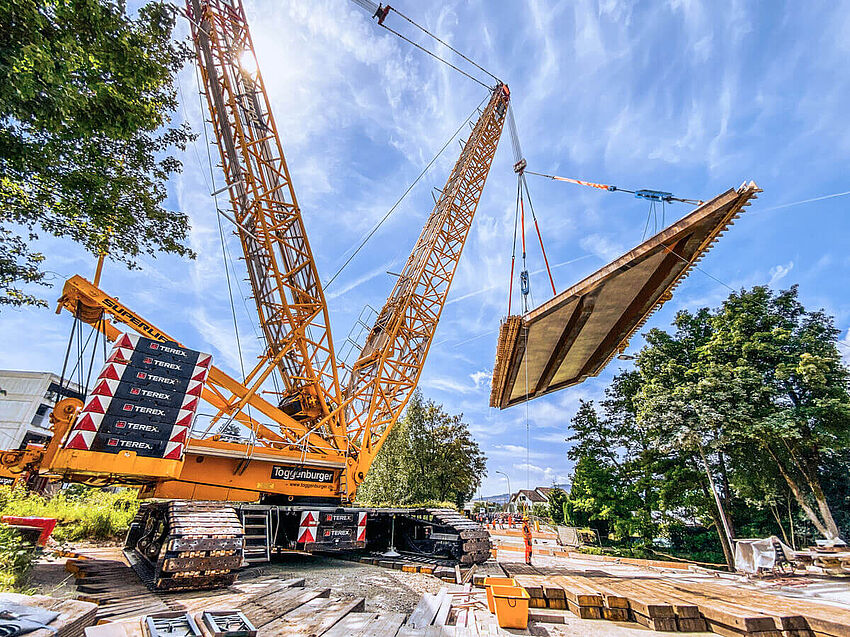Better Precast Girder Bridge Design with ALLPLAN: A Complete Workflow Solution
Building Information Modeling (BIM) is becoming more widely adopted in the infrastructure sector. However, the application of BIM in the bridge design process is relatively new and seldom used consistently in daily workflows. Many software tools exist which are designed and optimized for a specific task within this process but used for other applications. For example, structural analysis software is used for reinforcement design, or geometric modeling software is used for visualization, quantity take-off, or clash detection. However, interoperability between the individual solutions is mostly missing, so there is no end-to-end support of the complete bridge design process. ALLPLAN Bridge was designed specifically to address this need.
An Enhanced Bridge Design Process
The BIM solution ALLPLAN Bridge focuses on the requirements of bridge design engineers. Detailed design activities such as geometric design, structural analyses, simulation of the erection process, and reinforcement detailing tasks can all be done within one program. Design objectives, constructability constraints, and parameters relevant for structural analyses are incorporated in the model. These include detailed information on materials, connectivity (in case of composite structures), as well as prestressing tendons and stressing procedures. Therefore, it contains intelligent design and construction parameters instead of only the bridge geometry.

Parametric Digital Bridge Modeling
Parametric design enables a comprehensive and more detailed model to be created. It uses typical dimensions, planning criteria, and development rules as part of the model. Actual geometry data are derived on the fly whenever needed for visualization, clash detection, quantity take-offs, calculation of stiffness parameters needed in the structural analysis, or data transfer to other BIM platforms. The model is regularly updated throughout the design and construction process, so everyone is working with the correct and relevant data.
Parametric bridge design can also increase the efficiency of activities such as bridge alignment design, cross-section creation, and introducing variations. Many different bridge types can be supported with a parametric approach, including non-standard bridges like steel box girders, precast girder, or cable-supported bridges.
Complete Design and Analysis in One Solution
Based on the architectural model, a structural model can be automatically created to allow structural analyses in accordance with accepted calculation methods. For example, this computation model consists of beam elements describing the stiffness of the structure, and the respective loading data to be applied. This calculation model can also be adjusted if there are any special situations. In addition, the analysis model is automatically updated whenever changes in the architectural model are made, ensuring fewer errors while saving time.
The architectural model also contains a construction stage timeline. Using this timeline in the analysis model allows the detailed simulation of the construction process in the structural analysis. Reinforcement design and proof checks can also be carried out, based on the results of the structural analysis and erection process simulation. Combined with the advanced functionality for structural and reinforcement detailing, design optimization options, automated quantity take-off and drawing creation, and accurate tender preparation features, ALLPLAN offers a complete solution for the entire bridge design process.

Conclusion
ALLPLAN Bridge offers a completely new platform for modeling, structural analysis, code-based design, structural detailing, and BIM collaboration. By using one common bridge model for structural analyses, structural detailing, and other purposes, multidisciplinary collaboration is improved, as well as productivity and quality. For an in-depth look at how ALLPLAN Bridge can completely revolutionize your bridge design and construction work, read our whitepaper, Benefits of BIM for Infrastructure: Increasing Efficiency with the Latest Bridge Design BIM Tools.




